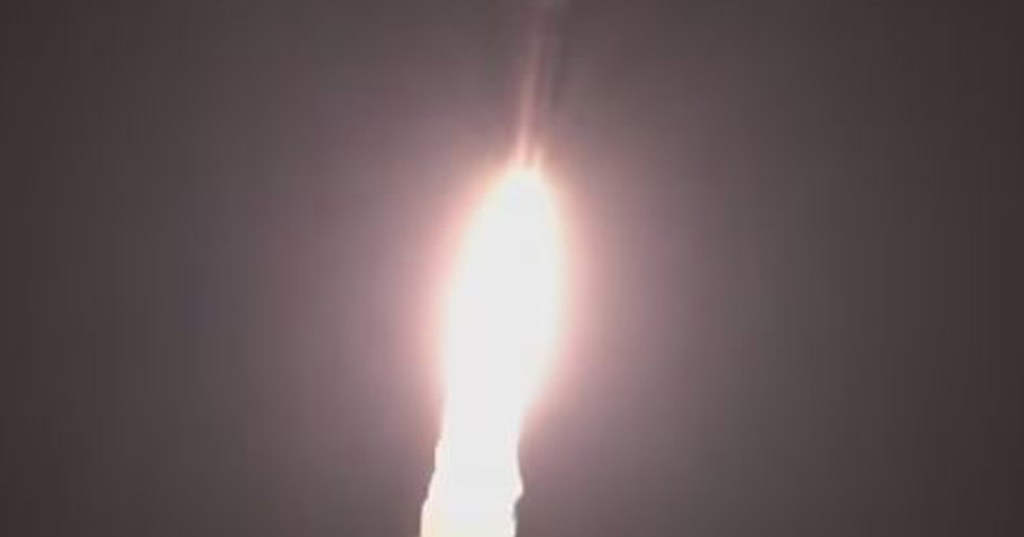Peregrine Mission-1 taking off from a space station in Florida
This is the mesmerising moment a spacecraft carrying a piece of technology developed by British scientists blasted off into space.
Peregrine Mission-1 is the first US rocket due to land on the Moon’s surface since Apollo 17 in 1972.
A video of the takeoff was captured at Cape Canaveral in Florida at 7.18am UK time.
Onboard is an instrument known as the Peregrine Ion Trap Mass Spectrometer (PITMS), which will help scientists understand the Moon’s potential to provide resources like water.
To view this video please enable JavaScript, and consider upgrading to a web
It will explore the natural satellite’s atmosphere, by measuring water and other molecules.
Astrobotic chief executive John Thornton said: ‘Today Peregrine Mission One achieved a number of big milestones.
‘Peregrine powered on, acquired a signal with Earth, and is now moving through space on its way to the Moon.
‘These successes bring us one step closer to seven nations landing on the Moon, six of which have never been to the Moon before.’
The UK-built component – called the Exospheric Mass Spectrometer – was developed under a European Space Agency contract by scientists at The Open University and RAL Space, UK’s national space lab.
It represents the first instrument on the Moon that has been built in the UK and in Europe.
Science and technology secretary, Michelle Donelan hailed this as a ‘significant achievement’.
He said: ‘The Exospheric Mass Spectrometer will be the first science component developed in the UK destined for the lunar surface, marking a historic moment for the UK space industry.
‘This significant achievement also lays the groundwork for understanding how to sustain extended human presence on the Moon in the future – changing the way humankind interacts with the solar system around us forever.
‘It is also a further sign of our close collaboration with international partners like NASA who I recently visited at the Johnson Centre, where we even discussed the potential for British astronauts to reach the moon in the future.’
The technology was developed in the UK by scientists from The Open University (OU) and the Science and Technology Facilities Council (STFC) RAL Space – the UK’s national space lab – in collaboration with Nasa’s Goddard Space Flight Centre in Washington DC.
It will help scientists understand the Moon’s potential to provide resources like water.
MORE : Today’s news summary – Paper Talk: Calls to ‘clear’ Postmasters
MORE : Epstein ‘filmed sex tapes of Prince Andrew, Bill Clinton and Richard Branson’


